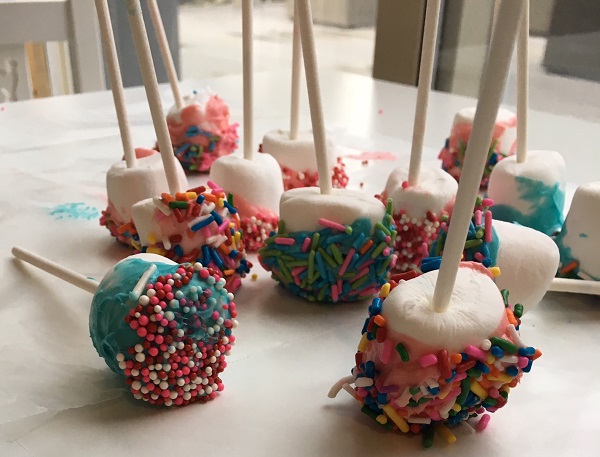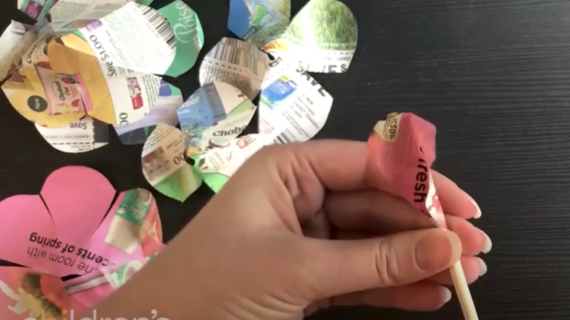
Bedtime guide: Sleep tips, consistency (and a new show) to help make bedtime a breeze
Photo above by Picsea via Unsplash.
Let’s face it: Bedtime can often feel like a wild circus act, complete with plot twists, drama and the occasional monster under the bed. But what if we could transform this nightly chaos into a peaceful and even fun experience?
We’ve got plenty of ideas for that below, including information about “Donkey Hodie Bedtime Stories,” a new ally in the bedtime battle now streaming on PBS KIDS. As summer’s free-spirited fun winds down and the school year’s routine kicks in, the show is a great way to meet your kids in the middle.
You might be thinking, “Screen time and bedtime? That’s like mixing oil and water.” But before you dismiss the idea entirely, hear me out. Sometimes, a few minutes of screens can be a surprisingly effective ally in the battle for bedtime bliss — especially if you wield them wisely and the content is calming.
This new series of shorts features characters from the hit PBS KIDS puppet show, who are winding down for the night with stories, calming strategies and even a goodnight song.
“We wanted to do more with reading stories and saw a big opportunity for bedtime to be one of those times,” says Kristin DiQuollo, the show’s co-executive producer. “These bite-size videos are things that kids and parents can use as they think about their bedtime routines.”
So let’s talk about routines…

The Power of Consistency
A solid, consistent bedtime routine is your best bet for ensuring your little ones get the z’s they need. Regular sleep times help sync their internal clocks. Over time, a consistent bedtime routine that always happens at the same time of night can make the whole process a bit less of a nightly showdown.
And as we transition from summer’s more relaxed schedule into the school year’s structure, consistency is a huge help.
“Routines are very important for children at bedtime, as they help them prepare mentally and physically for sleep,” says Mallory Mbalia, director of learning and education at Fred Rogers Productions. “Typical components include brushing teeth, bath time, putting on pajamas, and doing a calm activity like reading a story.”
If you do those things in the same order each night (for example: a quiet bath, then getting into pajamas, then brushing teeth, etc.), the process will become familiar and can help signal to kids that it’s time to wind down.
“Consistency is key,” Mbalia says.
If you don’t already have a routine like this, now is a great time to begin.
Tips for Easing the End-of-Summer Transition:
Gradually Adjust Bedtime: “If the summer schedule has been very different,” Mbalia says, “gradually reintroduce the school bedtime routine to help your child adjust.” Rather than waiting until the night before the first day of school, start shifting bedtime earlier by 10-15 minutes each night before school starts.
Reintroduce Morning Routines: In advance of the first day of school, begin waking your child earlier to match the school wake-up time.
Create a Back-to-School Routine: As we mentioned above, a consistent bedtime routine with calming activities will signal the end of the day and help ease the transition to sleep. This is especially valuable as a new school year begins.
Fun Tips for Better Sleep
There are lots of small things you can do make bedtime and sleep something your kids feel really positive about. You can try:
Glow-in-the-Dark Stars: Transform your kid’s ceiling into a starry night with glow-in-the-dark stickers.
Interactive Story Time: Jazz up bedtime stories with character voices, silly sound effects, or even a “magic word” your child gets to choose. It’s like improv with your favorite storybook characters.
The Worry Box: For children who have trouble settling due to worries, create a “worry box.” Have them write down what’s on their mind at bedtime on a piece of paper (you can help, if they’re new to writing), then fold up the piece of paper and put it safely in a box in their room. They can know that these things will wait until morning, sleeping in that box while the whole family gets plenty of rest to address these things the next day.
Sleepy-time Snack: Introduce a “sleepy-time snack” ritual. Offer a small, healthy snack like a couple of apple slices or a few spoonfuls of yogurt to avoid late night hunger pangs. (Though do make sure to keep the sugar content as low as possible and avoid processed foods and colored dyes, which many kids are sensitive to and can rev up their systems.)
Juice Please: An hour before bedtime, try giving your child a small glass of tart cherry juice (not the sweet kind!) before bed. Its natural melatonin can help promote restful sleep. Just four ounces an hour before bedtime can make a difference!
Bedtime Pajama Party: A quick, mellow dance party about a half-hour before bed (maybe right before you begin that bath, pajamas, brushing teeth routine) can help your child shake off excess energy. Play some relaxing tunes and let them groove it out.
Dream Jar: Create a “dream jar,” where your child can draw or write about things they would love to dream about and also write or draw about their dreams when they wake up.
Other strategies that can help at bedtime:
Creating a Sleep-Inducing Environment: How might you change your child’s sleeping space to make it more of a space of tranquility, rather than distraction? Keep it dark, cool, and quiet. A cozy atmosphere with comfy bedding and minimal distractions is the ultimate goal.
Mixing fun into your routine
Thought it’s important to limit screens in the hours before bed, strategically incorporating a brief time for things like “Donkey Hodie Bedtime Stories” into your routine can be a delightful way to wind down the day. Each episode includes a calming strategy, a story, and a goodnight song — perfect for modeling a peaceful bedtime routine.“The bedtime stories offer a short bedtime routine strategy for viewers,” says Mallory Mbalia. “The characters model a calming down strategy, share a story, and end with a goodnight song. It’s a great way for kids to transition to sleep.”














